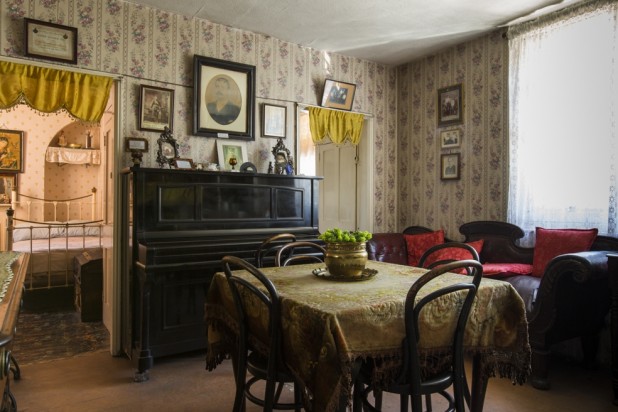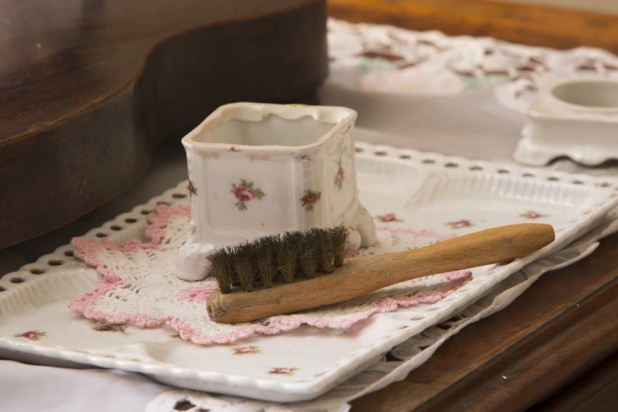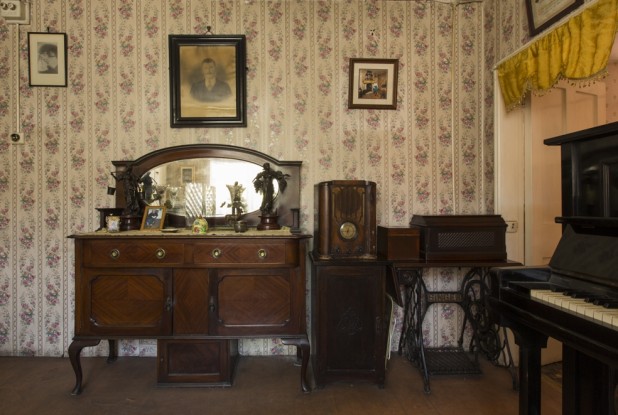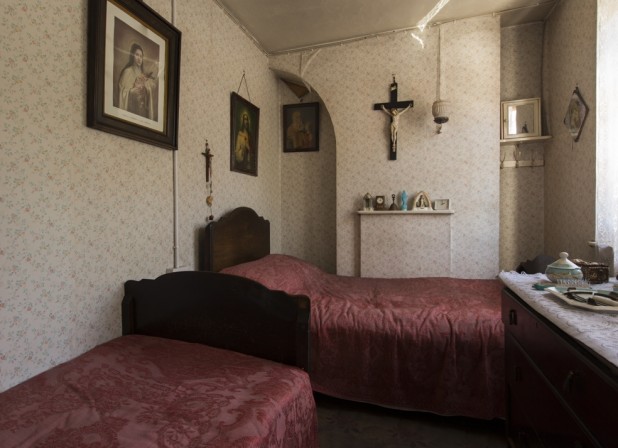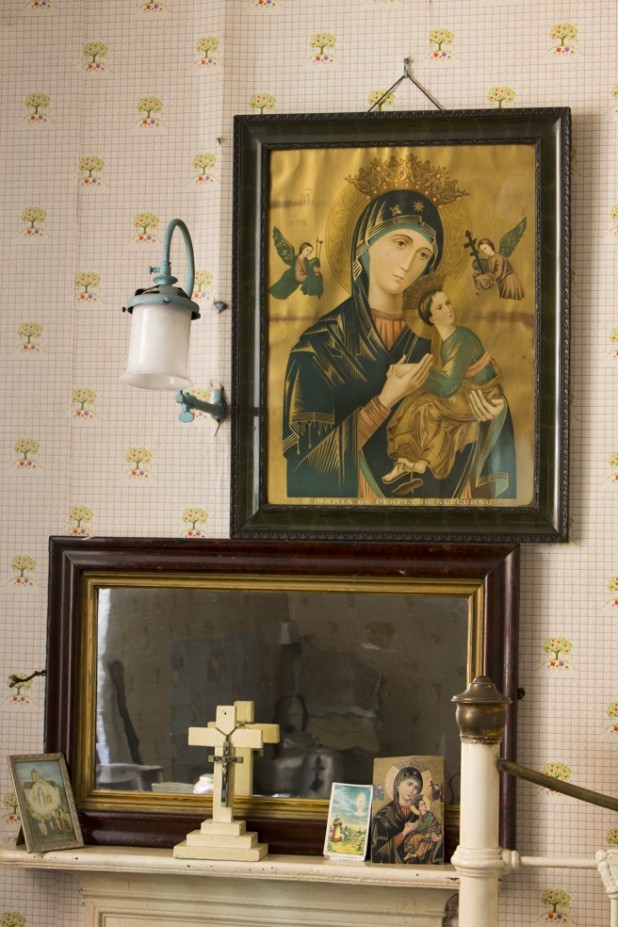The Iveagh Trust Museum used to be a Tenement Flat in Dublin 8’s Bull Alley Estate, Patrick Street. The flat, once known as Number 3B, was occupied by Nellie Molloy who died at the tender age of 95 on the 29th October 2002. She lived there for most of her life and preferred an old-fashioned lifestyle. Even though the Iveagh Trust offered to bring her flat up to modern standards, she chose not to.
The housing complex was built in 1901 and financed by Edward Cecil Guinness, the First Earl of Iveagh, who was the great-grandson of Arthur Guinness. The developments in the Christchurch and St. Patrick’s Cathedral area were all called after Iveagh. The Iveagh Building replaced the slum dwellings of early 20th century Dublin and was designed to accommodate working class families with low incomes.
Nellie was born on the 4th October 1907. She was the daughter of Sgt. Major Henry John and Anne Jane Molloy. She was the last tenant to occupy Number 3B. Sgt. Molloy was a veteran of the Boer War and the Great War. Nellie was the second oldest of six children – four girls and two boys. Her siblings were Thomas Joseph (1905), Mary Catherine (1909), Anne Jane (1911), Christina (1919) and Henry John (1921).
Before her family moved into 3B there were other tenants living there. The first tenant was a man called Ambrose Dwyer, who moved in on the 7th April 1904. After him there was four short lettings. On the 7th of June 1915 Henry Molloy and his family signed a tenancy agreement for 3B. The Molloy family had been living in 4 and 5B since 1907 after returning from Scotland. They needed a bigger flat and opted for the three room Flat. At the time the rent was set at five shillings and sixpence per week.
Nellie was very close to her mother, so close that one can almost say that there was no coincidence that both of them passed away on the same date. Nellie’s mother fell ill, forcing Nellie to leave her job in Harold’s Cross where she worked as a weaver for 27 years at the Greenmount Lined Co.. She looked after her sick mother for all that time until she died on the 29th October 1967. After her mother’s death she remained in the flat until she herself passed away on the 29th October 2002.
Nellie was never married, but a story often told says she did refuse one man her hand in marriage in the 40’s; she chose to continue nursing her mother instead. All her brothers and sisters got married though and the flat was used on each of these occasions for wedding breakfasts where they would celebrate with music, move the furniture away for dancing and sing songs in the bigger room of the three rooms of the flat.
The old piano, that is now a part of the museum, was used on these special celebrations. Almost all the furniture in the Museum is the original Molloy family’s property. Miranda, Lady Iveagh, donated the funds to buy up everything that was in the flat. Today the flat remains largely unchanged and is a true depiction of what life was like in Dublin during the 20th century.
What can you expect from a visit to the Iveagh Museum? Situated just north of St. Patrick’s Cathedral, the three room flat can be found in Block B of the Iveagh Building. The building has eight blocks, numbered from A to H. Above the doors of every block there is cursive letters in green A-Z’s, matching the green domes on the roofs. The buildings are five-storeys high, built with red bricks and the first floors are used for retail shops.It is one of 250 units and faces a court yard, with steps leading from one block to another.
The flat itself contains three rather small rooms, a living room and two bedrooms. The living room is where “almost” everything was happening in the Molloy family’s family home. The walls are covered with light pink floral wallpaper. It was used as a kitchen, dining-room area, livingroom and music room. A fireplace with a coal stove is built into the wall, with the “remembrance” of an old hand iron ready still standing on the top. In the middle of this room there is dining-room table with four chairs and a sofa at the window where the family could sit and eat.
The piano stands up against the wall, between the two bedrooms, and would have been used by Nellie who was musical and had a love for playing the piano. There are antique furniture pieces against the wall in this room with pictures and portraits of Nellie’s father and family hanging on the walls. The old radio-clock and Singer sewing machine stands in the corner. One of the bedrooms were shared by Nellie and her siblings. Today there is two single beds in the room. The room is so small it is hard to imagine that six young people could live in it, there must have been a few moments of feistiness. They used to partitioned the room off with a curtain to separate the two boys from the girls.
The third room was used by Nellie’s parents as their bedroom. This bedroom became Nellie’s after her mother passed away. Both the bedrooms have a religious theme and portraits of the Virgin Mary and the baby Jesus are everywhere, including pictures and little statues of saints and cruxificuses. You get the feeling that Nellie must have come from a very devoted Catholic family and upbringing.
Nellie’s bedroom has the washing basin in it that she used for washing herself, she wouldn’t agree to the trust putting a bathroom into the flat, this basin would have been in use still in 2002. She had to boil her own water on the stove in kettles before filling the basin on the stand. There’s no bathroom or running water in the flat. It leaves one wondering where she got the water from to do the washing and how she managed at the age of 95.
All Nellie’s belongings, including hairbrushes, scarves, hats and purses are still in the flat and in the drawers. The little kitchenette has all the old crockery and pots and pans still in it. In the bedrooms the dressing tables with mirrors still has old hand-mirrors, brushes and porcelain jewellery boxes lying on it. After a visit to this little museum you will think you have just time-travelled to your great-granny’s house.
The Iveagh Buildings where part of developments the Trust initiated in the early 1900’s. Other Iveagh schemes included the Iveagh Hostel (1905), Iveagh Baths on Bride Street(1906), Play Centre “The Bayno” (1915, now Liberties College) and St. Patrick’s Park (1904).
The buildings were designed by architects McDonnell & Reid and Joseph & Smithem. The Iveagh Trust, now almost 120 years old and an established and recognized charity, is a trust that was funded by the Guinness family to solve the problem for families who were living in a time when housing was at its worst. Families often had to stay in overcrowded rooms with bad sanitary conditions. The Guinness family known for their charitable acts wanted to change this and invested in housing for the poorer classes in both London and Dublin.
Today the Trust still provides affordable housing for people on low incomes and also look after the needs of homeless men. Hostels like the Iveagh Hostel (famous Irish poet Patrick Kavanagh was once a resident) remains a refuge for men who can’t afford expensive rents or are single. Today the Iveagh Trust is supported in their charitable work by institutions like Dublin City Council and the Homeless Agency. If you like a bit of nostalgia I recommend you take a trip down memory lane to visit the little Iveagh Museum and pick up a blessing while you are there.
